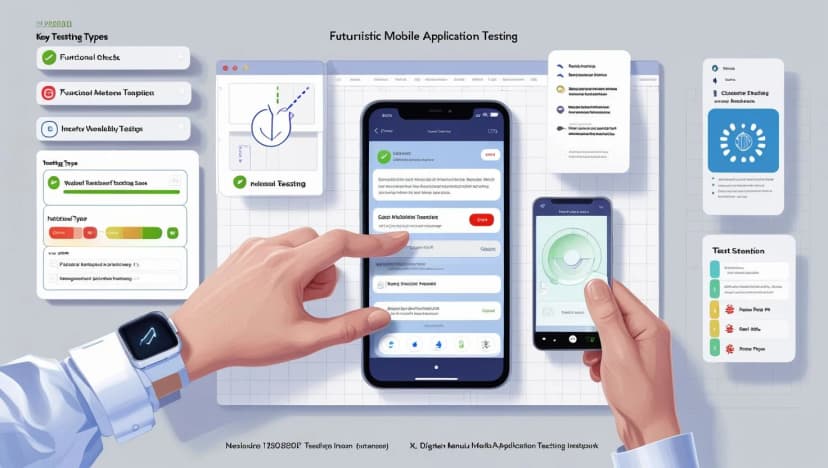Data Extraction Testing: Ensuring Accuracy from Source to Pipeline
Why Extraction Defines the Quality of ETL
In the ETL (Extract, Transform, Load) process, extraction is the critical first step. It’s the moment when raw data leaves its original source — whether that’s a transactional database, an API, a set of flat files, or a cloud data store — and begins its journey into the data pipeline. The accuracy and completeness of extraction determine the quality of everything that follows. If information is missing, corrupted, or delayed here, no amount of transformation or loading can repair the damage later.
Data Extraction Testing exists to make sure this stage is flawless. It verifies that data is captured exactly as it should be, without alteration, loss, or duplication.
The Role of Extraction in a Data Pipeline
Think of extraction as the foundation of a building. Without a stable base, no matter how perfectly the rest is constructed, the structure will fail. In an ETL context, extraction can happen in real time or in scheduled batches. Both require rigorous validation to ensure that every relevant record is included and that the process operates reliably under varying loads.
A well-tested extraction process ensures:
- Data is pulled in the correct format and structure
- No records are skipped, duplicated, or altered during transfer
- The process is resilient to source-side schema or format changes
Why Accurate Extraction Matters for Business Outcomes
The consequences of poor extraction ripple across entire organizations. Inaccurate or incomplete data in a business intelligence dashboard can lead to faulty strategic decisions. In finance, a single missed transaction could skew compliance reporting. In retail, incomplete sales data can result in flawed inventory forecasts, leading to overstock or shortages.
High-quality extraction ensures that decision-makers are working with a true and complete picture of the business, not a distorted one. This reliability builds trust in analytics, AI models, and operational dashboards.
Common Challenges in Data Extraction
Extraction rarely runs perfectly every time. Testing must account for:
- Network instability – interruptions during large data pulls
- API limitations – rate limits and throttling can delay or drop data
- Source changes – schema updates or renamed fields that break the pipeline
- High volume pressure – slowdowns when handling millions of rows
Robust extraction processes need built-in error handling, retries, and logging for diagnosis.
Incremental vs. Full Data Loads
One of the key distinctions in extraction testing is whether the process runs as a full load or an incremental one.
| Load Type | Description | Benefits | Risks |
| Full Load | Pulls the complete dataset every run | Guarantees completeness, good for first-time loads | Time & resource intensive |
| Incremental | Fetches only new or changed records | Faster, reduces load on systems | Risk of missing updates if logic fails |
Testing must ensure both methods work flawlessly under different conditions.
Performance and Scalability Testing for Extraction
In large-scale operations, speed is as critical as accuracy. An extraction process that takes hours to complete can create bottlenecks downstream, delaying transformation and loading stages.
Performance testing answers questions like:
- Can the extraction complete within the SLA?
- How does it scale as the dataset grows?
- Does it perform equally well with real-time streaming and batch runs?
A Real-World Example: Retail Sales Extraction
Consider a nationwide retail chain extracting point-of-sale data daily. Testing in this scenario involves:
- Comparing transaction counts between the source and staging
- Verifying product IDs, prices, and timestamps match
- Simulating store outages and ensuring retry logic works without data loss
Key Metrics That Define Extraction Quality
| Metric | Purpose |
| Record Count Match (%) | Ensures completeness between source and staging |
| Field-Level Accuracy (%) | Confirms no value corruption during extraction |
| Extraction Duration (min) | Measures process speed |
| Retry Success Rate (%) | Indicates resilience to failures |
| Data Integrity Hash Check | Validates unchanged data via checksums |
Tracking these provides quantifiable proof of extraction reliability.
Best Practices for Reliable Data Extraction
To ensure long-term stability in data pipelines:
- Automate verification scripts for large datasets
- Use hashing to confirm field-level data integrity
- Test with production-like volumes before go-live
- Maintain detailed extraction logs for troubleshooting
- Monitor extraction performance regularly and adjust scheduling to avoid system overloads
Looking Ahead: The Future of Extraction Testing
As organizations move toward real-time streaming architectures and cloud-native ETL platforms, extraction testing will need to validate event-based triggers, semi-structured formats, and API-based micro-batch extractions. Integrating extraction tests directly into CI/CD pipelines will be essential to catch issues before they affect production analytics.
Conclusion: Protecting the Pipeline from the Very Start
The extraction stage is the gateway to the entire ETL process. Flaws here echo all the way to business intelligence dashboards and machine learning models. By rigorously testing extraction — from completeness to performance — organizations safeguard their decision-making, compliance, and operational efficiency.
At Testriq, we specialize in building robust ETL QA frameworks that ensure your data pipeline starts on solid ground.
📩 Contact us to secure the accuracy and reliability of your data from the very first step.
About Jayesh Mistry
Expert in AI Application Testing with years of experience in software testing and quality assurance.
Found this article helpful?
Share it with your team!
